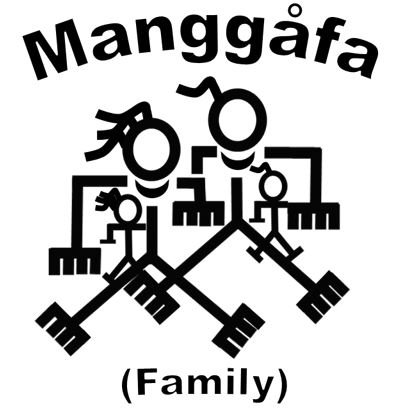A CHamoru Woman from Saipan: Who was Choco's Wife?
Last night, April 26, 2022, 7:00pm (Pacific Standard Time) I had the honor to participate in Zoom presentation by Dr. Floro Quibuyen, “Choco! Forgotten Chinese Leader and Arch-Enemy of the Jesuits in the 17th Century CHamoru Rebellion Against Spain.” Two primary panel members included were Dr. Richard Chu and Dr. Vicente “Vince” Diaz.
Thanks to Vince, for notifying me of this presentation and also yielding some of his time to Dr. Robert Underwood and me. From every conversation and paper I come across from these two (and many others) I learn a lot for my journey. I have become more critical in scrutinizing the historical narratives that exist. It’s because of the CHamoru Roots Genealogy Project, I attempt to hone in more and question how do these narratives compare with the perspectives of the people who were actually affected and may have not written about it?
The time that was yielded to me was in hopes that I could possibly speak more to family lore and the genealogical relationship of Choco to the Chaco families. Unfortunately, I was not able to directly bridge any data regarding Choco to help support the Chaco family lore. However, I did point out that the Chaco surname can be found in the 1727 and 1758 census.
I did learn a few new things from Dr. Quibuyen’s presentation. His presentation also made me wonder more about the potential role and influence of CHamoru women in the rebellions against the Spaniards in the mid-to-late 1600s. I requested for a copy of Quibuyen's paper, so I hope to receive it soon.
Choco is historically known as a Chinese man who eventually made his way to Guam in 1648. Choco was on a vessel[1] traveling from the Philippines to Ternate (Moluku/Molluca Islands), but ended up wrecking in the Mariana Islands from a storm.
He[2] married a CHamoru woman from Saipan, but who was she? Given that this was a period when CHamoru society was matrilineal, how much did she influence Choco to rebel against the Spaniards? For heaven’s sake! Children were dying after being baptized; a fatal foreign practice from a native mother’s perspective! I can only imagine the wrath and vengeance that a CHamoru mother would seek from what would appear to be the murder of her innocent child(ren). Unfortunately, this is one of the many challenges of the historical narratives that exist for our CHamoru ancestors. Many of them remain unnamed and without their perspective, compounding the genealogical gaps of the past with the present.
Here is the early census data I referenced during the Choco presentation:
1727 Census
|
Last Name |
First Name |
Sex |
Category |
Extended Notes |
|
Chaca |
Catalina |
F |
Unmarried Women |
| Agat, Guam | Sex: F | Marital Status: S | Notes: |
|
Chaco |
Pedro |
M |
Married Men |
| Aniguag, Guam | Sex: M | Marital Status: M | Notes: |
|
Chacó |
Pedro |
M |
Married Men |
| Pago, Guam | Sex: M | Marital Status: M | Notes: |
|
Chacó |
Josė |
M |
Small boy |
| Pago, Guam | Sex: M | Marital Status: S | Notes: |
1758 Census
|
Last Name |
First Name |
Sex |
Spouse |
Parents |
Village |
|
Chaco |
Jose |
Male |
Lucia Songsongña |
Asan, Guam |
|
|
Chaco |
Januario |
Male |
Augustina Felipa Tadguaha |
Pago, Guam |
|
|
Chaco |
Domingo |
Male |
Januario Chaco & Augustina Felipa Tadguaha |
Pago, Guam |
I would love to hear more about the Chaco family lore from members of the Chaco families.
And for the Chaco family, I have also found the name Vicente Chaco listed in a “List of soldiers living in the Marianas in 1807.” Vicente Chaco, was assigned to the Pampango Company of Infantry.[3]
I also think you should be aware that I also found one Chinese name from the 1800's. Chua Chaco is recorded in an 1860 judicial document. I believe the document has something to do with Chaco having an unsettled debt but Don Pedro Palomo agreed to pay Chaco's debt in exchange for Chaco's farming services. I currently do not know if he ever settled on Guam, married or if he had children on Guam.
Footnotes:
[1] “Sampan” according to Rebecca Stephenson et. al., 2010, Guam Is Our Home: Taiwanese-Chinese “Old Timers” Perceptions of Guam, Pacific Asia Inquiry, vol 1 no 1.
[2] Choco and his wife settled in the ancient village of Pa’a, located on Guam’s southern coast. He was baptized with the name Ignacio during the Feast of Saint Bernard, August 20, 1668. (Alberto Risco, S.J. 1970. The Apostle of the Marianas: The Life, Labors, and Martyrdom of Ven. Diego Luis de San Vitores, 1627-1672. Translated by Juan M.H. Ledesma, S.J. and edited by Msgr. Oscar L. Calvo. Hagåtña: Diocese of Agana; and Francisco Garcia. 2004. The Life and Martyrdom of the Venerable Father Diego Luis de San Vitores , S.J . Translated by Margaret M. Higgins, Felicia Plaza and Juan M.H. Ledesma. Edited by James A. McDonough. MARC Monograph Series 3. Guam: University of Guam)
[3] Rodrigue Levesque. 2002. History of Micronesia, vol. 18: Russian Expeditions, 1808-1827. University of Hawaii Press: Hawaii


